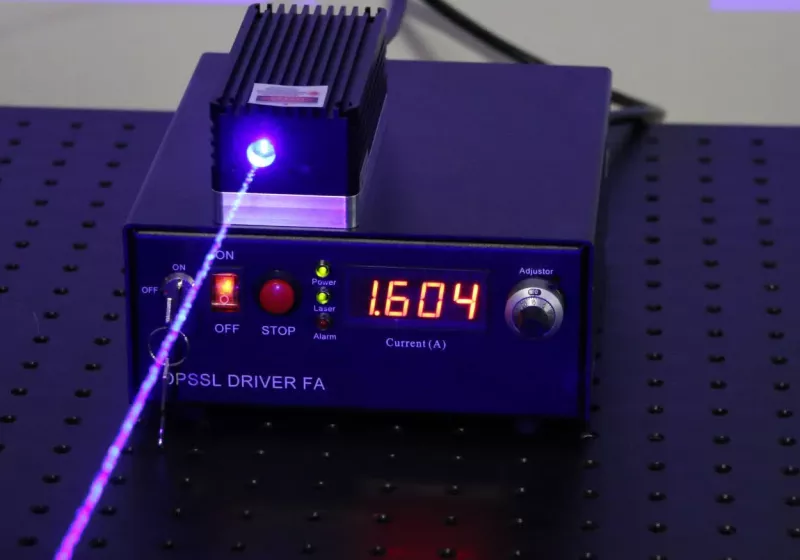Portable power stations have been a game-changer for me. Not only do they give me the ability to effortlessly weather the occasional power cut, but I can also take power with me when I venture off-grid (which I do quite often). They're the ultimate power bank – one that can run all of your gadgets and gizmos during emergencies or disconnected adventures.
I've tested dozens of these power stations from a wide array of brands. Some I'm more partial to than others, and my top three are constantly changing. If you're considering a power station, these are the three I'd recommend right now.
Also: Stop buying cheap multitools - here's the one I recommend instead
The Elite 200 V2 is a 9-in-1 portable power solution that's built to deliver 2,073Wh of power for extended periods. Bluetti has focused on durability and reliability, using automotive-grade LiFePO4 cells that have a 6,000-recharge cycle lifespan, allowing them to offer up to 17 years of continuous service. That right there completely redefines what I expect from a modern power station.
Bear in mind that, at 13.8×9.8×12.7 inches and 53 pounds, this is big and heavy, so this isn't something you're going to want to be lugging too far on foot alone.
I recently used this power station to run a completely off-grid "office" for a few days. Over a long weekend, it handled my satellite internet, laptop, and other gadgets with ease. I didn't even bother with solar panels because the 2,073Wh of power reserve was more than enough for my needs.
If you thought the Bluetti Elite 200 V2 was big and heavy, you ain't seen nothing yet! This Anker Solix F3800 weighs in at a whopping 132 pounds. It's so humongous, it gets delivered on a pallet.
It needs that bulk to hold the 3,840Wh of power. On top of that, it can can deliver dual 120V/240V and an impressive 6,000W of AC power (with a 9,000W surge) to run everything in your home. This power station can handle a 4,000W air conditioner while still powering your coffee maker and bread maker.
If you need even more power, you can connect up to six expansion batteries to the Solix F3800, increasing total power storage to an astonishing 26,900Wh -- enough to run the average home for a week.
Review: I took this 130-pound power station on an off-grid adventure - here's my buying advice
After reading about my two picks above, you might be thinking that power stations are all big, heavy, and expensive. Not all power stations are created equally, and they certainly aren't all weighing 100+ pounds.
The RIVER 2 is light, weighing in at only 7.7 pounds and is currently priced at $210. For this you get a 256Wh, unit that can run a 100W load for close to 2.5 hours. The AC output can handle a sustained output of 300W (which would drain the River 2 in under an hour) and surge loads up to 600W.
The unit is rugged and well-built and shrugs off the inevitable knocks and bumps of regular use.
Review: I've tested dozens of cheap portable power stations and this EcoFlow is my favorite
I spend a good chunk of my time every month both testing and using power stations in a variety of situations -- at home, in vehicles, and at off-grid camps.
When I'm using these power stations, I'm not babying them, I'm pushing them as hard as I can, often going beyond what the manufacturers recommend. I drag them about, bump them along miles of bad road, and expose them to the extremes of hot and cold. A surprising number give up the ghost, but the power stations that survive come out as the best of the best.
You can be confident that anything and everything that I list has been tested to the limits, and is something that I'm willing to not just use, but rely on.
There are four main distinctions that set portable power stations apart from power banks:
- Capacity: Portable power stations boast significantly larger battery capacities compared to power banks. While power banks are ideal for topping up smartphones or tablets, a power station can recharge devices multiple times due to its much greater capacity, which is typically measured in watt-hours rather than milliampere-hours (mAh).
- Size and Weight: Power banks are compact and lightweight, often small enough to fit in a pocket. In contrast, portable power stations are bulkier and heavier, designed to be transported by hand or wheeled from room to room, making them less convenient for everyday carry.
- Outlets: Power banks generally feature USB ports for charging smaller devices. On the other hand, portable power stations come equipped with AC outlets, allowing them to power a wider range of devices, including larger electronics and appliances.
- Charging Options: Power banks are typically charged using a USB charger, which limits their versatility. Portable power stations, however, can be charged from various sources, including standard wall outlets, solar panels, and vehicle 12V outlets, providing greater flexibility for users.
Manufacturers typically offer different runtimes for lamps, refrigerators, CPAP machines, and so on, but if you want to work this out for yourself, you may need two figures, and a bit of math!
First, you need the power rating of the device you plan on running, which can usually be found on a label on the device and is measured in Watts (W). You also need to know the capacity of the power station, measured in Watt hours (Wh), which should be printed somewhere on the device.
Let's say you have a device that consumes 200W and a power station that has a capacity of 2,048Wh, you can get a ballpark runtime for the device using the following equation:
(2048 x 0.85)/200 = 8.7 hours
Note that the capacity of the power station is multiplied by 0.85 to account for efficiency losses that happen.
Gasoline Generators:
Because they burn gasoline, these generators pose significant safety risks when used indoors. The combustion process produces carbon monoxide, a colorless, odorless gas that's deadly and can lead to suffocation. On top of that, gasoline generators create fire hazards, are often noisy, and emit unpleasant odors that can be disruptive in residential settings.
Portable Power Stations:
In contrast, portable power stations operate quietly, emit no fumes, and produce minimal heat. They require little to no maintenance beyond occasionally checking their charge levels. This makes them an ideal choice for a variety of settings, including indoor use and outdoor activities, without the concerns associated with gasoline generators.

 2 months ago
29
2 months ago
29







 English (US) ·
English (US) ·